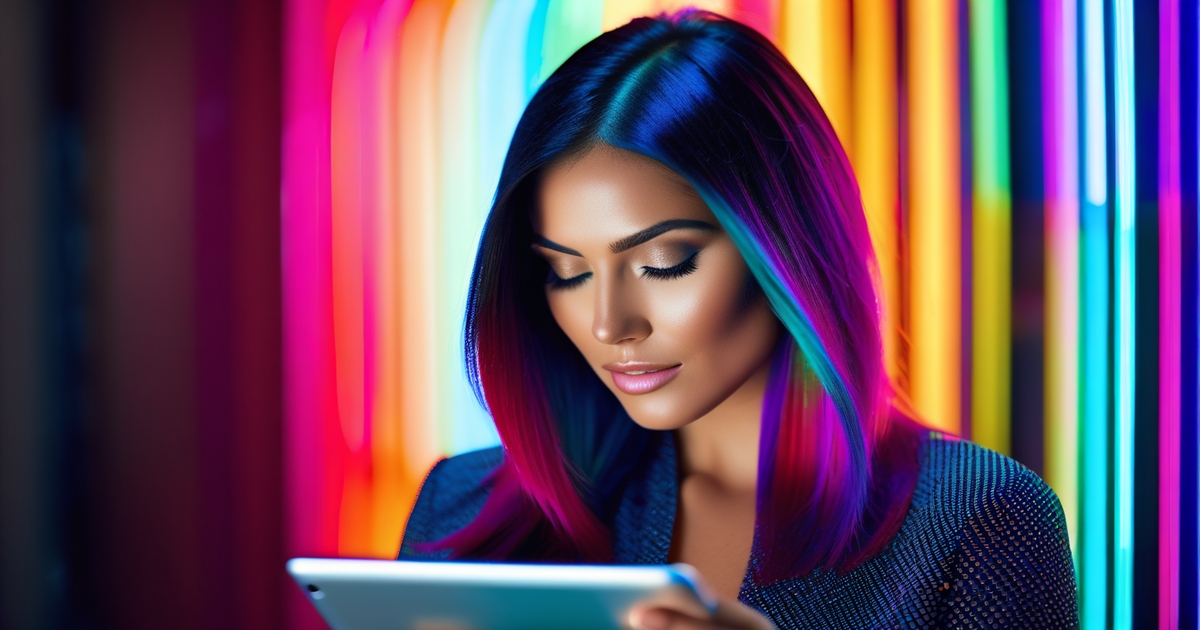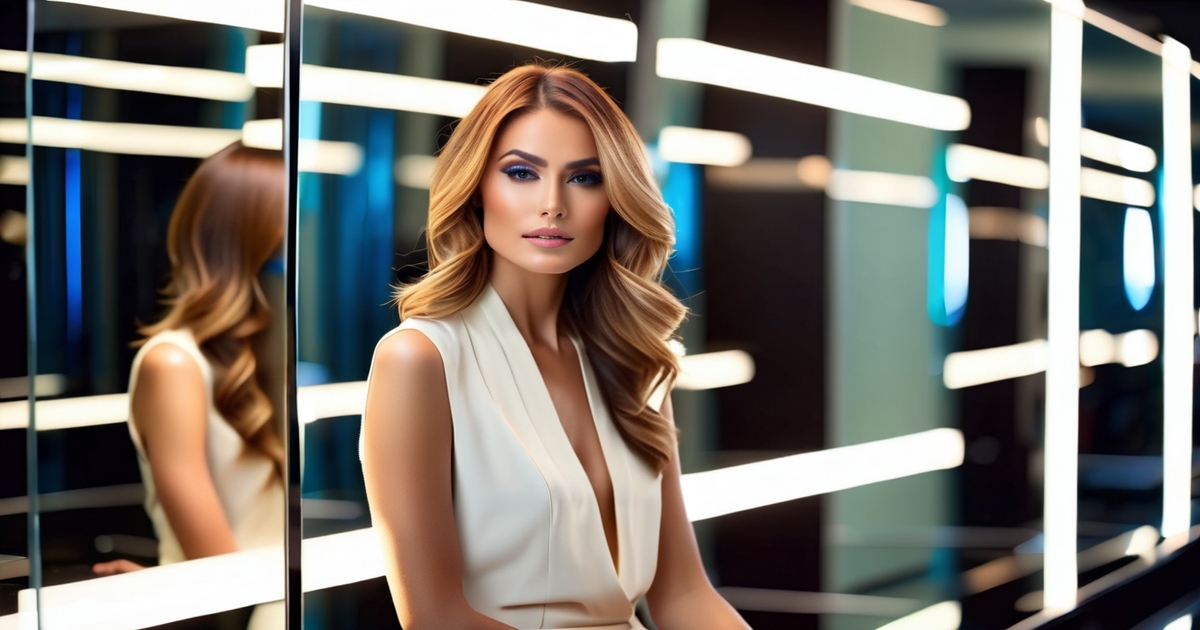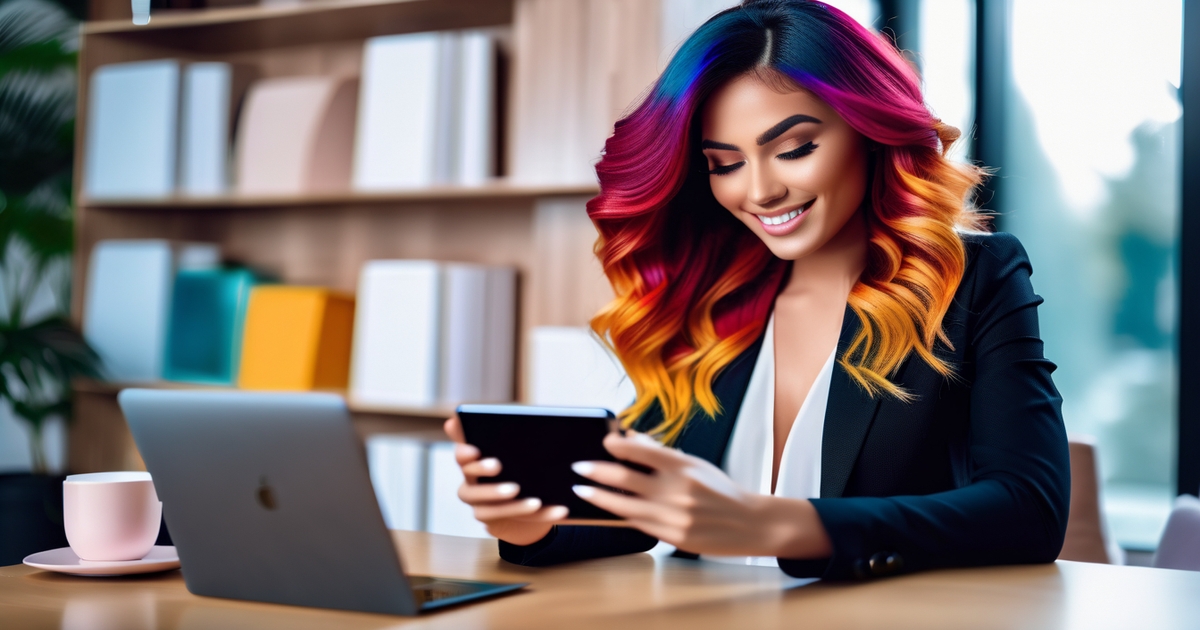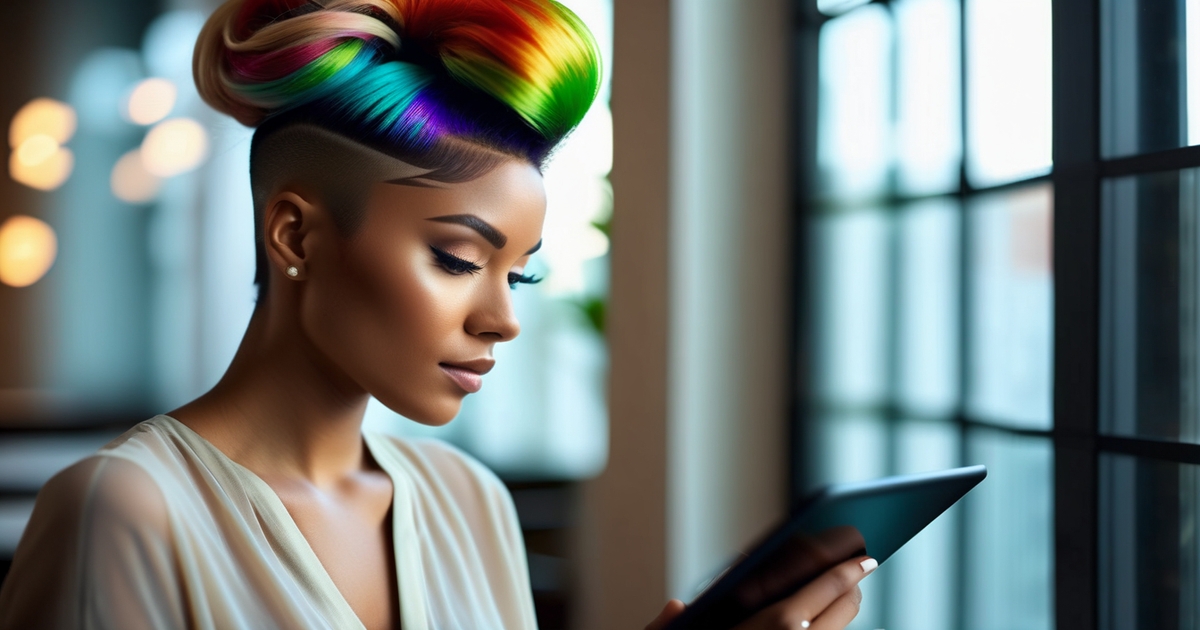Try On Your Next Hair Color: The Best Free Virtual Simulators

Key Takeaways
- A hair color changer allows you to try on new colors with AI and augmented reality so you can experiment with natural and bold hues risk-free. It allows you to preview the style before that salon appointment or dye purchase.
- Instant previews simplify the decision process with side-by-side comparisons and live hair tone-matched suggestions. Try, tweak, and share results in seconds.
- You save on the cost of trying shades in real life — no more grabbing five kits at the drug store or booking trial appointments. Most of the tools are free or inexpensive, with premium features available.
- Live try-ons instill confidence by highlighting shades that complement your skin tone, eye color, and style. Inclusive options cover all hair types, lengths, ages and genders.
- For best results, go wild and upload a clean selfie in brilliant natural light, product-free hair, and don't be afraid to experiment with different angles. Adjust intensity or brightness to zero in on the match.
- Anticipate more than just color soon — think virtual hairstyle switches, makeup overlays, and personalized recommendations powered by AI. Keep things like screen variations and privacy in mind when posting photos.
🎨 Take Your Color Analysis Quiz
Ready to discover your complete color palette? Take our comprehensive color analysis quiz to identify your seasonal type and get personalized color recommendations that perfectly complement your natural features.
Take Color Analysis Quiz →A hair color changer is a feature or application that allows users to try out different hair colors virtually. It utilizes AR or photo uploads to tone map, highlight test and trend try-on — all without a trip to the salon.
Most tools provide shade libraries, root touch-up views, and saves for before-and-after. Nice apps let you work with different hair textures and lighting, and can print hex or brand-matched shades.
To rank the top choices, the following sections contrast functionality, precision, and price.
📚 Recent Articles
What is a hair color changer?

Hair color changers are either online or mobile apps that allow you to virtually try on new hair colors on a selfie or live camera. This immersive beauty experience provides a fast, visual try-on so you know if a shade fits before you schedule a salon appointment or unbox a dye. Imagine a virtual try-on booth for hair color, designed for quick and low-risk experiments.
AI and AR power the preview. The app initially maps your face and hair by detecting edges, strands and light. It then superimposes a digital color on top while maintaining texture, shine and shadows. Great tools follow hair in real time as you rotate your head and maintain elements such as curls, frizz, and flyaways. Because it's a combination of facial landmarks, hair segmentation and lighting estimates, this makes the color look more real and less filter-flat.
Most platforms provide hundreds of shades, including popular hair colors. Scroll through timeless browns, blondes, and blacks, cool or warm reds, and on-trend shades like rose gold, pastel lilac, teal, and silver. Most apps organize their shades by undertone and depth to allow you to match skin tone and brow color effectively.
You can adjust results with sliders for intensity, smoothness, and brightness, so a bright copper can read as soft strawberry or a deep auburn with more shine. Some even allow you to experiment with ombré, balayage, or peekaboo streaks, and a handful enable experimenting with multiple colors simultaneously for split-dye styles.
The process is easy. Upload a clean photo or use the live cam. Choose a tint, slide strength, then compare before/after. It takes the average user a couple of minutes to load and try on a few new looks. Pro tip for the best effect: use even light, keep hair away from your face, and ditch the heavy filters.
If the tool permits, save or share the look to get feedback, or take the preview to a stylist as a point of reference. This handy hair color simulator helps you strategize and sidestep guesswork. You can observe how a frosty ash blond takes on indoor light, or whether a warm chestnut enhances in daylight.
It's especially handy if you've got to adhere to workplace rules, are experimenting with fall color transitions, or want to gently dip your toes in bold waters with subtle gloss-level punch. A digital try-on can't compare to every salon brand formula, but it provides a clear indication of how different hair color shades may suit you.
It can reduce expensive color corrections and make salon consultations speedier, more transparent, and more interactive.
The core benefits of a hair color changer

There's something really great about using an online hair color changer — it allows you to easily experiment with different hair color shades and contrast various hairstyles without any risk or commitment. This immersive hair color simulator slots into worldwide schedules, from the office to Instagram, matching the rhythms of the seasons.
1. Risk-free exploration
An awesome tool allows you to experiment with uncharted color roads — no heat, bleach or dyes required, so no harm or parchedness. You can glide from gentle caramel to cherry cola in minutes and protect your natural hair.
Because we know making bold picks feels less scary when you can undo with one tap. Pair platinum, copper or strawberry blonde against natural black or brown, take a step back and see what 'feels' right.
Preview major transformations—brown to platinum blonde, black to ash gray—before any salon discussion. That fast perspective reduces the regret potential and makes transformation a serene decision.
Since it's reversible, you can continue experimenting until you find a color that fits your life, budget, and comfort. That liberty ignites innovation.
2. Instant gratification
Change occurs seconds. Upload a photo or open live camera, tap a shade, and watch it fall onto your hair with lifelike shine and dimension.
A lot of tools display side-by-side views with split sliders, so you can compare two blondes or warm vs. Cool brown and analyze the tone match. Others provide live recommendations according to your personal hair tone and light, directing you toward shades that complement them, not battle with their undertones.
Share drafts with friends or post to social in the same flow!
3. Cost-effective choice
Avoid piles of dye boxes and mini salon experiments. Most tests are covered by a free or inexpensive simulator. Premium plans add pro features minus the shock bill.
By viewing a realistic preview first, you escape expensive misbuys and color fix. Monthly or annual plans make costs transparent.
4. Confidence boost
There's a confidence that comes with discovering a shade that compliments skin tone and eye color, and it shows. It can give your first impressions at work a boost, where nuanced shifts often translate as sophisticated and crisp.
Play with cut, parting and color in combination to sculpt a look that fits mood and objectives. Style My Hair 2.0 The best hair color changers sense hair gently and lay on color that honors texture, curls, and highlights, so the preview is intimate.
This goes for all hair types, lengths, ages and genders. When it looks real, decisions seem solid.
5. Trend testing
Try trending tones before they go big: cinnamon brunette, butter blonde, or vivid blue-black. Switch quickly between traditional, seasonal or celebrity inspired styles.
Many have a rich palette—black, brown, blond, strawberry blond, along with bespoke blends—and unveil new hues for spring/summer and fall/winter. Brands leverage the same tech to restyle product photos, providing models with vivid looks for e-commerce with no reshoot necessary.
How a virtual hair color try on works

Virtual hair color lets you dip your toes in new looks with no dye, no salon chair, and no guesswork. By using an online hair color changer, you can upload a clean selfie or activate your live camera, allowing the tool to map your hairline, texture, and light. From there, it applies color to your strands in real time, enabling you to evaluate shade, depth, and shine before making a commitment.
Most users begin with a straightforward request to allow camera access or select an image. A well-lit photograph taken head-on aids the algorithm in reading your base color and shape. Good tools utilize advanced mapping along with an algorithm that reads your current hair color and skin tone to suggest shades that suit you best.
Warm skin usually goes with copper, honey or caramel. Cool skin gravitates toward ash, mocha or plum. Or, if you want to explore solo, you can dig down into color families — blondes, browns, reds, black, pastels, fashion tones — and then sort through hundreds of shades to locate a match.
- Select a shade
- Adjust intensity or brightness
- Review the instant color preview
The preview loads almost instantly, and the overlay adapts as you move. You can adjust saturation to see if a soft rose gold works better than full-on pink, or increase brightness to test a sunlit blonde versus a deeper beige. This interactive experience allows you to experiment with different hair color shades effortlessly.
With live camera mode, a slight tilt reveals how color shifts in various lighting conditions. Using a selfie, you can zoom in to inspect edges around bangs or curls. Many tools also incorporate a compare feature, allowing you to toggle between before and after images side by side to identify subtle shifts in tone.
Accuracy is solid for majority of tools, with mean render precision ~99%, but it nevertheless relies on your image quality, lighting, and hair texture. Very dark hair will appear to have less lift on ultra-light shades as the tool honors realistic boundaries.
Access is broad, enabling you to try on color from your phone, computer, or tablet across most modern browsers. You can experiment with a daring blue at lunch and then double-check in indoor light back home. There's no commitment and no fuss—just save your favorites, share with a friend, or take a screenshot to your colorist as a concise brief.
With the convenience of an immersive hair color simulator, you can easily explore various hairstyles and hair colors, ensuring you find the perfect shade that complements your complexion and personal style.
Getting the most accurate results
Realistic previews begin with a crisp, clean image where hair is distinct. Apps read edges, texture and shine, so photo quality sets the ceiling. Anticipate some trial and error with hair selection tools — once you learn their quirks, results get better fast.
Upload multiple angles, use natural lighting, and keep your editing light. If the app provides saturation or shine controls, tweak those. A split-screen view assists in gauging subtle shifts. Dark hair might require additional exposure and contrast to prevent flat color. A few of the tools are restricted as well, such as allowing a single gray shade, so select the appropriate application for the task.
Good lighting
- Shoot photos next to a window during the day for soft, even light that minimizes shadows and maintains color accuracy.
- Stay away from overhead fluorescents, colored bulbs and heavy backlight–they distort tones and bleach out detail.
- Turn to the sun, hold at eye level, and step 1–2 m away to prevent glare.
- If sunlight isn't an option, a ring light on low to medium brightness offers even spread.
Direct or diffused sunlight can confuse the online hair color changer app into sampling warm or cool tones that aren't in your hair color. Even light allows the immersive hair color simulator to trace edges cleanly, so the color overlay smudges instead of appearing glued on. For really bright sun, shift into open shade; it preserves texture and dodges blowouts.
Natural hair
To start, ensure your hair is dry, clean, and free of products. Oils, gels, or shine sprays can create glare that obscures texture, making it difficult for the online hair color changer to detect edges accurately. Brush or comb your hair so it lies smoothly; crisp edges help the app locate each strand, especially around curls and wisps.
Avoid wearing hats, scarves, or chunky clips, as these can shadow areas and lead to patchy results. While your current hair color can still yield results, uncolored hair offers the best canvas for the immersive hair color simulator. If you have filters applied, be sure to turn them off before taking your photo.
For those with very dark hair, increase the exposure slightly and step closer to the camera. Apps may struggle to read details in near-black hair, so brighter lighting and a clearer image will enhance the experience. This is essential for achieving a seamless color blending when using an ai hair color changer.
Multiple photos
- Post front, 45-degree and side shots to test color hold over edges and layers.
- Add one close‑up for fiber details and one full‑face shot for balance.
- Print contact sheets and lay them side-by-side to identify halo lines, missed flyaways or color banding.
- Split‑screen to compare the new color to the original.
Run the hair select tool two times if borders appear soft. Nudge saturation down for deeper shades, lift shine a touch for gloss with no plastic glare. The better your photos, the better the results, and the most sophisticated apps create eerily lifelike previews.
If gray is your target, remember some apps provide a single gray, so you may want to test others or adjust warmth.
Beyond color: The future of virtual hair
Virtual try-on tools already allow users to try over 100 shades, ranging from muted browns to vibrant lilac, with a live camera or selfie. Most apps throw in sliders for color, brightness, and smoothness, so the fit feels lifelike. You can place two or more colors side-by-side — which is helpful when skin tone or undertone is top of mind.
This low stakes play frequently ignites some inspiration; a real-world patch test still counts prior to any dye.
Predict integration of advanced features like hairstyle changes, makeup overlays, and background removal.
The next wave incorporates complete looks, not simply color. Hairstyle swaps will trial length, layers, bangs and curl patterns, mapped to head shape and hair density so volume rests perfectly. Makeup overlays will sync tone and warmth, displaying how copper hair shifts with neutral lips or how ash blonde plays well with cool blush.
Clean background removal will help the eye zoom in on hair shape and shade, great for side-by-side comparisons. Think quick kits: bob + chestnut + soft matte skin; long coils + plum + glossy lid. It allows others to view proportion, not pieces.
| Feature | What changes | Why it helps | Example use |
|---|---|---|---|
| Hairstyle changes | Length, texture, fringe, part | Tests shape with color | Try blunt bob vs. wolf cut in mocha |
| Makeup overlays | Skin, lips, eyes synced to hair tone | Checks harmony | Pair rose-gold hair with cool berry lip |
| Background removal | Clean edge, neutral backdrops | Clear compare | See burgundy shade in indoor vs. daylight |
| Multi-color compare | Split or grid view | Faster pick | Four blondes side-by-side with brightness tweaks |
Expect greater personalization with AI-driven recommendations based on user habits and preferences.
AI will learn from saves, tap time and past edits. If you frequently bump warmth +10 and smoothness +5, it'll pre-set that. It can read skin tone from the selfie, then pitch shades that flatter, plus a wild-card pick to widen options.
Over time it can recommend seasonal swaps, like softer reds for summer light, deeper browns for low winter sun. It can detect hardware constraints as well and nudge you to shoot in natural light by a window, at approximately 1 meter for more accurate results.
Foresee expansion into inclusive options for all ethnicities, ages, and hair types, making virtual makeovers accessible to everyone.
Improved mapping for coils, curls, waves, and straight strands will keep edges intact and frizz authentic, not fuzzy. Shade ranges will expand to encompass jet black with cool depth, silver with subtle undertone, henna-inspired reds, and protective-style palettes for braids, twists, and locs.
Age-aware views will display gray blend, root smudge, and low-commit gloss. Tools will allow users to experiment with protective styles adorned with colorful threads, or test out balayage on tight curls without squishing the texture.
The aim is simple: anyone, anywhere, can try, compare, fine-tune, and decide with less guesswork and more joy.
Limitations to consider

Virtual hair color changers allow you to explore concepts, they aren't a guarantee. Screens change color, lights change shade and movement of hair is not like pixels. Take results as a road map, not a golden design.
Digital previews fight nuance. A phone set in warm light may reflect a copper tone as honey, while a laptop with chill preferences edges toward ash. Indoors beneath LED lights, a rose-brown might appear cool whereas in daylight it becomes warmer. This gap widens with black hair, where apps frequently brighten shadows too much and show highlights that actual dye couldn't get to without bleach.
Ditto for shine. Simulators provide gloss, but real hair's porosity and condition determine how light reflects. If you've fine or curly hair, it reflects less evenly and that's why a lot of the colors read duller in life than on screen.
Complex styles push the boundaries further. Hand-painted highlights, lived-in blondes and multi-tonal balayage require depth and placement that most tools can't map well. A top bun, thick curls or bangs make overlaps where colors must transition in small increments, but most apps smear spaces flat.
Ashy highlights can turn muddy, reds can shift neon, and cool blue-black hair frequently registers as just black. Dramatic changes like jet black to pale blonde are another instance where preview speed obscures real world speed. Safe salon practice equals multiple lightening sessions, with a minimum of 4 weeks between bleach work and 8 weeks between full-head color to shield the fiber.
Privacy is among the trade-offs. By uploading a face photo to an app, you implicitly trust how your image is stored, shared, or used to train models. A few of the tools store images locally on-device, while others transmit them to cloud services.
Read the policy, check permissions, blur backgrounds. If you can, use local/desktop software and don't link social accounts.
Colorcare aftercare is a reality that simulators never demonstrate. Roots appear within 4–6 weeks. Undertones matter: a cool ash can fight warm skin undertones, while a warm caramel can bring out warmth in brown eyes and olive skin.
Patch test the dye on skin 48 hours prior, even if you colored previously. Semi-permanent colors wash out quickly—anywhere from a handful of washes to a few weeks—whereas permanent shades wear off more slowly but require maintenance. Hair type changes risk: thin, fine, or curly hair can be more fragile, especially with bleach. Big shifts require pro guidance and time, not a session.
| Limitation | What it affects | Why it matters |
|---|---|---|
| Screen differences | Shade accuracy | Warm/cool displays shift tone perception |
| Lighting mismatch | Real-life match | Indoor vs daylight changes color warmth |
| Complex hairstyles | Highlight placement | Flat fills miss depth and dimension |
| Multi-tonal effects | Nuance | Subtle blends turn uniform or banded |
| Privacy concerns | Personal data | Photos may be stored or shared by apps |
Conclusion
Hair color changers make tough decisions flutter. Try bold red, cool ash or soft brown in just a few taps. Witness rapid transformations of tone, shine and shade. Save time, save money, and bypass guesswork. The tech keeps up, as well. Smarter face maps, richer color sets and better light fixes arrive swiftly. Boundaries still exist, like stubborn ringlets or weird illumination. The benefits outweighed the risks for most people.
To establish definitive outcomes, utilize unsoiled hair, soft illumination, and sharp images. Give two or three a shot, next to each other. Have a professional check if a shade feels off. For a playful launch, conduct an experiment with a warm copper, a cool beige, and a deep espresso. Ready to online test drive your next color. Give a top app a whirl today.
Frequently Asked Questions
What is a hair color changer?
The hair color changer is an amazing tool that allows you to try different hair colors on your photo or live camera. It uses AI to identify your hair and add believable colors. You can try as many colors as you want, no strings attached.
How accurate are virtual hair color try-ons?
Using an online hair color changer, you can achieve pretty accurate results in good light with a clear, front-facing photo. The immersive hair color simulator shows results that vary based on hair texture, existing color, and image quality.
Do I need a professional photo for best results?
No. A clear, brightly-lit smartphone picture does the trick. Look straight at the camera, have hair exposed, and don't have heavy shadows. This helps the immersive hair color simulator map your hair accurately for a new look.
Will the color look the same in real life?
It'll be near but not precise. Screen brightness, lighting, and your hair's undertone can change results when using an online hair color changer. Follow it and double-check with a colorist or strand test prior to dying.
Can a hair color changer show highlights and balayage?
Ditto with advanced tools that give you multi-tone looks like highlights, balayage, and ombré using an immersive hair color simulator to apply tones that imitate salon highlights.
Is my photo data safe when using these tools?
Select services with transparent privacy policies and safe storage to ensure your experience with the online hair color changer is secure and enjoyable.
What are the main limitations to consider?
Curly, frizzy, or highly light reflective hair can test precision in achieving the desired hair color change. Additionally, hats, shadows, and filters can diminish quality, making it essential to consult an expert for the best hair color options.